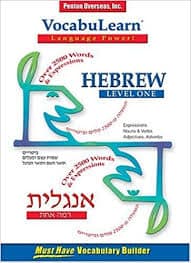Vocabulearn Mini Review: Unlikely to Teach You a Language
Vocabulearn
Summary
Vocabulearn has so-called audio courses for numerous languages on Amazon and Spotify. We don’t believe you’ll learn much from them, but they could help you practice your pronunciation. For this mini review, we tried out the Vocabulearn Swahili/English Level 1 course. It’s split into four CDs, each with its own theme, and then each theme is divided into four lessons. The themes are: Nouns; Adjectives, Adverbs, Prepositions, Conjunctions 1; Expressions; Verbs. In each track, we listened to long lists of words and phrases. First, it was said in English; secondly, it was said in Swahili. However, there were no grammar or contextual explanations, drills, or activities to help you remember the material. In short, we’re not convinced that you’d be able to make your own sentences or even remember the vocabulary after listening to these CDs. However, if you’re studying a language with fewer resources, we think you could use it to practice your pronunciation by repeating each word after the speakers say it.
Vocabulearn Mini Review: Unlikely to Teach You a Language Read More »












